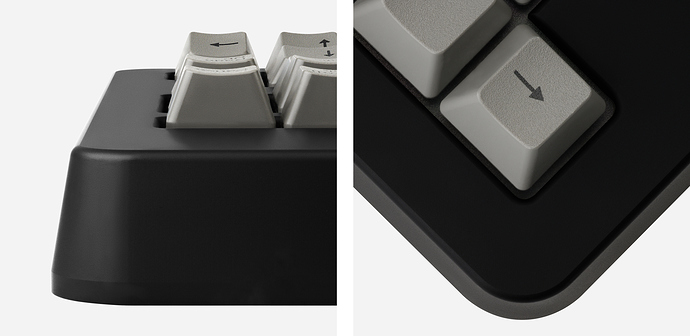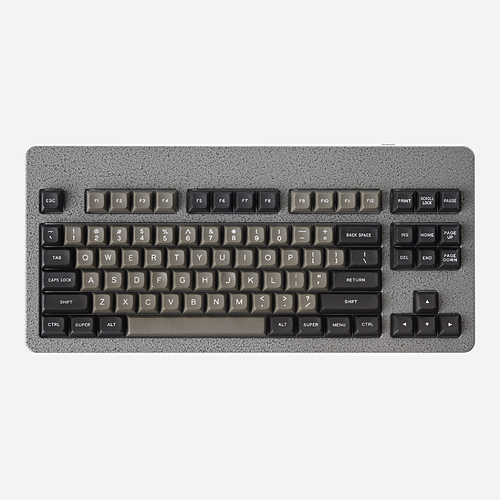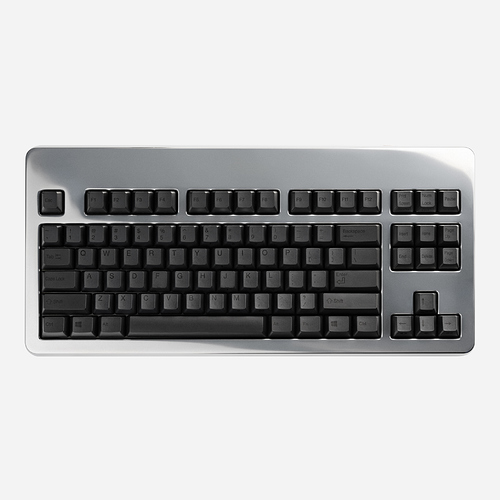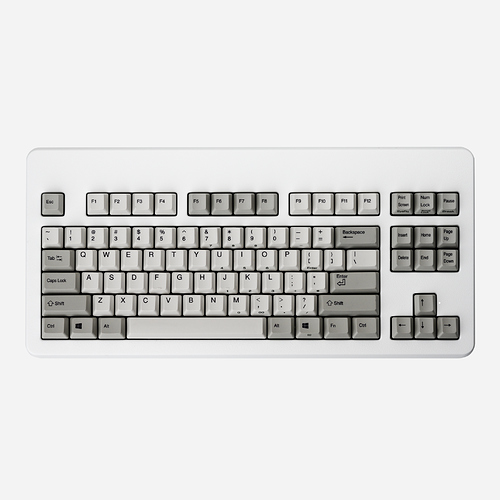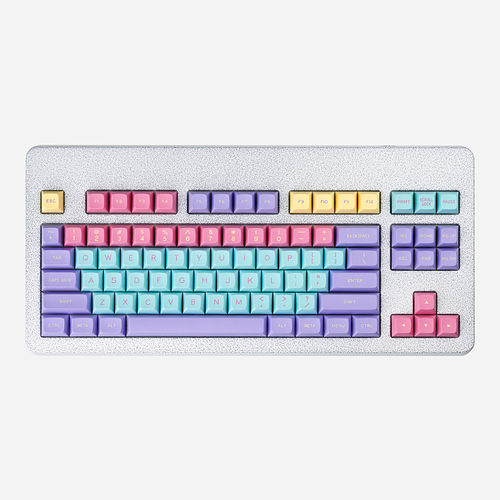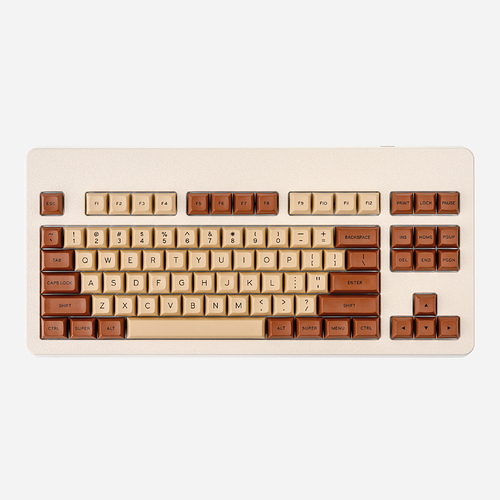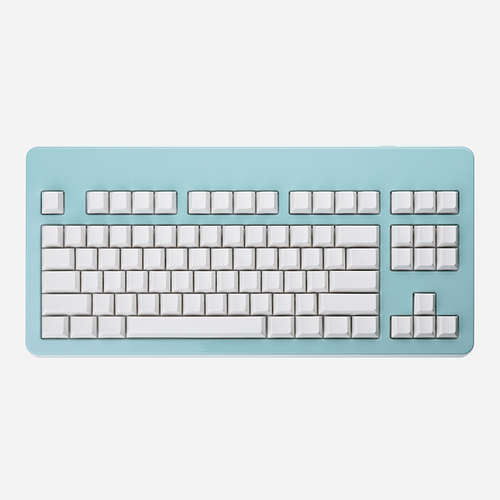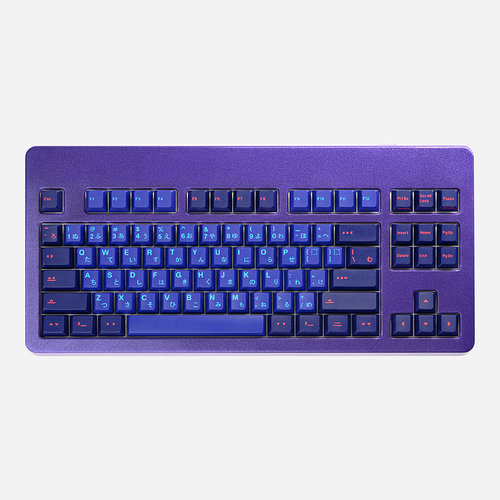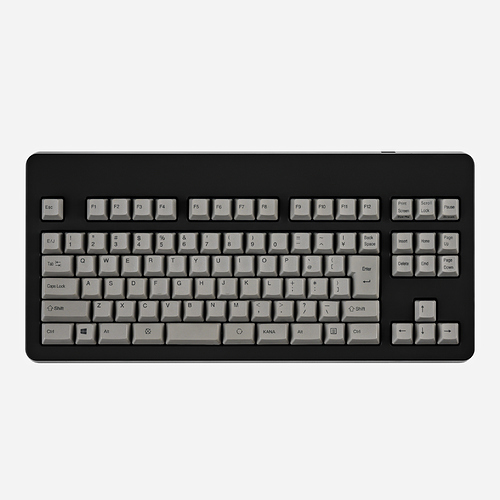I’m happy to report that the Norbaforce Mark II is now available for custom pre-order, through October 26th. It is my after-market upgrade housing for the venerable Realforce family of keyboards, manufactured in Japan by Topre. The Norbaforce Mark II expands support from the 87U family of Realforce keyboards to the R2 family of TKLs as well.
This ground-up internal redesign of the Mark II has the same retro-futuristic exterior design of the popular Mark I but includes a number of enhancements, not least of which is the fact that this is my first keyboard housing that is fully Made in the USA, affording me unprecedented in-person control over quality and the opportunity to work personally with some amazingly skilled (and equally obsessive) artisans.
Addition of support for the R2 family of Realforces means we can now easily obtain Topre keyboards that support Cherry MX keycaps and use them in a Norbaforce. I’ve also switched the breakout port to USB Mini for greater support of popular enthusiast cables and less confusion around USB-C cable capability.
Another upgrade, inspired by the Heavy-6, is the switch to a powder-coated galvanized steel rear cover plate, which non-trivially adds to the weight of the housing: over 5½ pounds (2.5kg) with an 87U installed.
Cost, manufacturing, and margins
Moving manufacturing to the United States has resulted in an enormous jump in quality and consistency but also a modest increase in the prices I must charge. However, the least expensive finish I’m offering in this batch (K2) is actually only $5 more expensive than my last offering of in-stock powder coated Norbaforces, which is now sold out. Even for the other more expensive powder finishes, moving production entirely to the USA caused only a 13% retail price increase over parts made in China. And in my tests and pre-production runs, I’ve already empirically observed a much better than 13% increase in quality. There are other less quantifiable (and more philosophical) benefits to moving production, which incidentally have nothing to do with tariffs. My thoughts on this subject have been evolving considerably of late and I shall likely have more to say at some point, but for the moment I shall leave the specifics for the reader to surmise.
For whatever it’s worth, I’m also partly eating the higher costs I’m paying for USA production by assigning a lower margin to this batch than any other product run I’ve done before. This is because I believe in this new local manufacturing model and want to see it succeed. I also believe the resulting better quality control will help constrain the unexpected costs I’ve had to deal with in the past, which means I should be able to get away with a decreased financial safety buffer to account for scrapped parts.
Incidentally, the reason I’m offering the K2 finish at a lower price is because it can be batched with the much larger set of rear cover plates that are being coated in the same finish. It also has the lowest observed reject rate among the finishes, meaning less costs associated with rework.
To be sure, anodizing on the Mark II (the “Tactical” finish) is non-trivially more expensive than on the Mark I, and thank goodness. It means I’ve finally found a vendor whom I can actually pay more for good and reliable cosmetic results. As I’ve extensively bemoaned in almost every interview I’ve ever done, serious cosmetic defect rates on China anodizing can often be as high as 50% or more, a phenomenon with which almost any community group buy participant is familiar. Even after hiring on-the-ground consultants and inspectors and trying easily 20 different vendors in China, I’ve never gotten consistently good results, even after pro-actively trying to pay more to persuade the finishing vendors to actually care about QC. The low prices on my last run of the Norbaforce were simply a mirage, a gross miscalculation, and a disastrous money-losing proposition for me, given how many I had simply to scrap in order to keep to my cosmetic standards–meaning I had to cancel a fair number of orders around shipment time, which always makes me feel awful because I hate disappointing people, and which I’m keen to avoid on this new round. This new pricing for hard-anodized housings simply reflects what it actually costs to get the job done right. ![]()
Also, as an aside, my experiments have revealed that the Tactical finish takes nicely to hand-waxing, if you’re into that.
Veracity Steel: maintainable, and heavy AF
I learned quite a few lessons from the Heavy-6 project, but one of them was the astonishing community demand for extremely heavy housings with unusual materials and finishes, even if those desires come at some considerable manufacturing/materials cost. Also, as a result of the hand-waxed finish on the black Monolith and how well it was received, I’ve learned that there is an appreciation among my clients for materials and finishes that are maintainable over time.
As a result of these two observations, I’ve increasingly become interested in what I call “Veracity” finishes, which is to say materials that don’t disguise themselves with a thin finishing layer on top of their true underlying nature. This is with the understanding that, while the finish may be more susceptible to wear from everyday use, it can be also be more easily maintained and polished back to its original look–unlike, say, a Type II anodized part that scratches very easily and then is nearly impossible to restore back to its original appearance.
One sees this philosophy commonly in the luxury watch and leather goods world, where “living materials” are rightly valued and restoration and maintenance are part of the expected lifetime of an object that can be regarded as heirloom-worthy. It is generally understood, for example, that stainless watch cases worn regularly will need to be polished to remove minor everyday scratches and abrasion. This inherent maintainability is prized among watch collectors, and it’s something I’m embracing with the Veracity Steel option on the Mark II, which offers naked stainless steel, painstakingly hand-polished to a mirror finish.
Also, incidentally: with the keyboard installed, it weighs over 9 pounds. I hereby disavow any responsibility for your desk collapsing under its weight.
Be sure to add a breakout PCB to your order
These are being sold separately, so you can get the PCB that works with the type of keyboard you’ll want to use with your Norbaforce.
Bundle offer
Later today, I’ll be sending out a private offer to my newsletter list to get a discounted Keybrief or Keyring (both of which are based around the Norbaforce) with the order a Mark II, so if interested make sure you’re on the list. ![]()
International shipping
I am now offering the ability to pay for calculated duties and taxes in advance with your order rather than having to sort it out with your customs authorities on delivery. This is a trial of a new service, and we’ll see how it goes. But it allows me to maintain direct relationships with clients rather than dealing with a complex network of proxies. This should makes things much easier when it comes to sorting out delivery issues or any other problems that may arise on arrival.
Any questions?
Finish details, specs, pricing, timelines, etc., are all in the group buy page on my site, but I’ll post some teaser photos below. Any questions or concerns, please post them here or reach out to me directly at shop@norbauer.com. I am, as always, at your disposal.
Many thanks, as always, to everyone in the community for your enthusiastic support of my work. This one has been a long time coming and represents a totally new way of making stuff for me. I hope you’ll consider supporting it. ![]()
